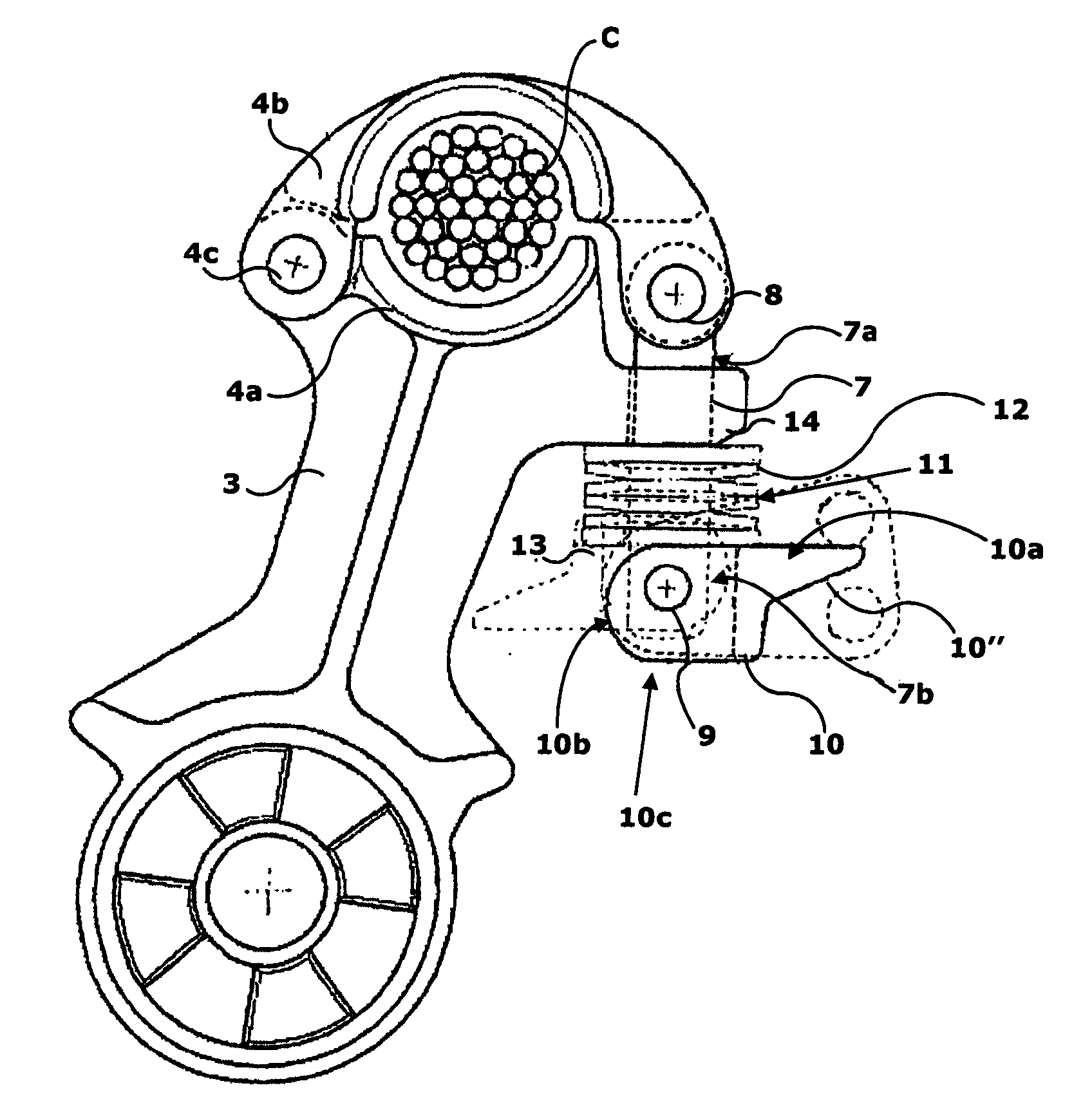Anchoring Clamp on Bundle Wires for High-Voltage Electric Lines and Dampening Spacer Provided with Such Clamp
- Summary
- Abstract
- Description
- Claims
- Application Information
AI Technical Summary
Benefits of technology
Problems solved by technology
Method used
Image
Examples
Embodiment Construction
[0048]FIGS. 1A and 1B show, in an elevation view, a dampening spacer according to the prior art. It is a spacer for 4-strand bundle, comprising a rigid central body 1, on which oscillating arms 3 are hinged, each one through a pin 3a and dampening means 3b (not shown in detail, being well-known) which accomplish a dampening of the oscillations induced on arms 3 by the action of the electric line wires.
[0049]FIG. 1B shows well the structure of clamp 4 tightening on the wire (not shown), which implies, for each one of arms 3, a pair of jaws, of which a first one, referred to as 4a, is integral with arm 3 and a second one, referred to as 4b, makes up a separate piece but mounted moving with respect to the first one. The two jaws 4a and 4b are associated by means of a bolt 5 and a guiding tooth 4d. This construction is anyhow well-known and no further explanation is deemed necessary here.
[0050]FIG. 2 and following ones show instead the configuration according to the invention. Oscillati...
PUM
 Login to View More
Login to View More Abstract
Description
Claims
Application Information
 Login to View More
Login to View More - R&D
- Intellectual Property
- Life Sciences
- Materials
- Tech Scout
- Unparalleled Data Quality
- Higher Quality Content
- 60% Fewer Hallucinations
Browse by: Latest US Patents, China's latest patents, Technical Efficacy Thesaurus, Application Domain, Technology Topic, Popular Technical Reports.
© 2025 PatSnap. All rights reserved.Legal|Privacy policy|Modern Slavery Act Transparency Statement|Sitemap|About US| Contact US: help@patsnap.com



